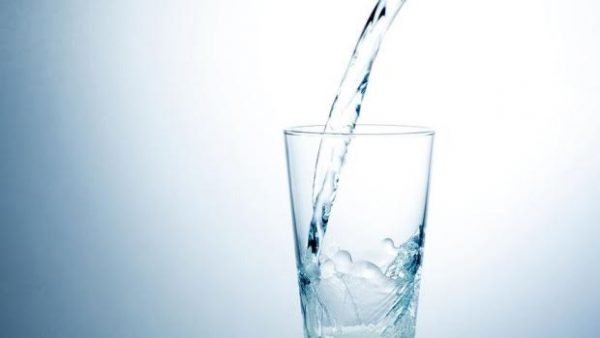
It is amazing how quickly things can fall apart.
Things can seem to be normal until they are not. This is the nature of trigger points. Things change seemingly under the surface until something happens and ‘suddenly’ you have a full-blown crisis on your hands.
One example is the nation’s waterways. Those of us of a certain age can remember clean rivers where we could swim and didn’t have to worry about putting our heads under water. We knew, in recent years, that we had a problem but this has in the last year of an extreme neo-liberal government and the takeover of the country by dairy become a serious crisis that is now being written about every day.
So it is with our local community.
Lower Hutt, and especially Petone, has had some of the purest aquifer water anywhere in the world and people came from many miles around to fill their bottles at a communal tap.
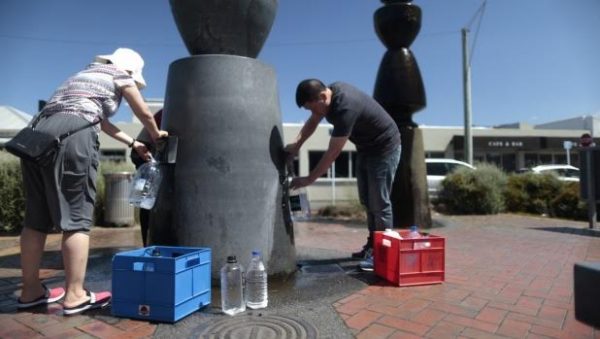
All that has disappeared, in an instant, as it were, and it doesn’t look as if we are ever going to get our pure water supply back.
Clearly there are a lot of angry and upset people who are no longer able to access pure water, free of chemicals, for their families.
LOWER HUTT NO LONGER HAS A SOURCE OF UNTREATED WATER
Some weeks ago we noticed that the tap water had a very distinct smell of chlorine. Then, about ten days ago we were approached by someone we know who, without revealing anything at all, expressed their anger at what was apparently a cover-up by the local council and encouraged us to ask our own questions on behalf of the concerned public.
Next came a newspaper article from the Dominion Post as well as the Hutt News (owned by the same media company,Fairfax).
When this was posted on social media this comment was made by a friend:
“Hutt water is on my mind.
“The aquifer runs underneath Lower Hutt and whenever there is major work, such as a new building or a new bridge, there is always a concern about its impact on the aquifer”
“What are the chances of our aquifer being breached by the recent work at Hutt City Council buildings/new Event Centre? I understand the aquifer is very shallow there Ray Wallace – could it have been drilled through for foundation work? Maybe there was a notifiable consent that I missed? How do I find out?
It`s a very sad moment to loose our pristine water that rates as some of the purest in the world – and surely one of our greatest assets of the Hutt Valley.”
In answer to the very obvious question “When will we get it back? That’s the only water my family drinks” the response came back:
“We probably won`t. Apparently pretty impossible if it has been breached. Its totally sterile under the ground…only ruined if it has holes put through it or if too much is sucked out and ground water is then sucked into aquifer.”
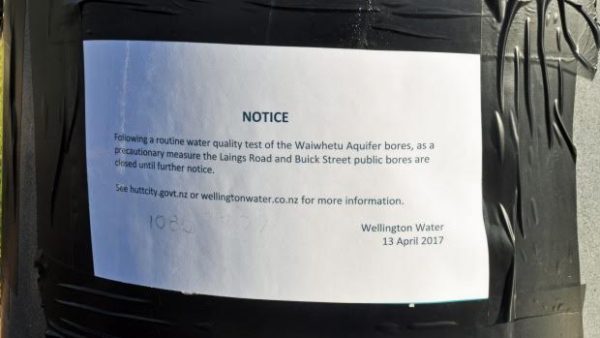
This was not the only voice of concern. My partner received a phone call while she was away in the South Island, also encouraging us to look into this and to ask questions.
Not knowing how to get an honest response from officialdom she wrote this letter to the mayor of Lower Hutt, Ray Wallace:
“Kia ora Ray Wallace,
“As concerned residents and observers of the contamination of our city’s water supply and precious aquifer we’re angry & upset at the lack of transparency from Council in its communication of this huge issue. Please come clean and tell us what is really going on – or what you THINK is going on. Even if just to say, initially “We don’t know. We are working hard to find out. We have the best minds on the job”
“It’s a crisis. Please treat it as such and keep us updated.”
Mayor Wallace’s reply:
“Sorry Robin I can’t see how you can possibly say the Council’s hasn’t been transparent. We have had updates on our website daily, we have put out press releases with updates which both print media and radio have picked up on. Our communication has been consistent. This is serious, Public safety is paramount. This is the first time there has ever been a contamination at source (the aquifer) bacteria levels are trending up. We have Wellington Water engineers doing an investigation and until we know more for safety of the drinking water it will be chlorinated. That has been the consistent message and that remains the position.”
As one person pointed out in response what we need is not “transparency” but the truth. Just think of the expression “transparent lies” and you’ll know what I’m talking about.
We took our suspicions to Mike Joy of Massey University, champion of New Zealand waterways and scourge of the polluters.
His response was brief and unequivical:
“Yeah it will be human sewage I bet. Broken leaking sewer pipes…. Broken pipes near where aquifer busted”
MEDIA COVERAGE
The media coverage has largely been abysmal and designed, on the surface, to support the council’s obfusication (unless the author has used aesopian language to encourage the reader to look between the lines for a possible explanation)
Looking at the article from the Dominion Post it is really a dog’s breakfast without a logical development.
The official position is that the water is safe, they don’t know what the cause is although it “may” be due to earthquake damage.
The author of the article, Nicolas Boyack starts off by saying:
“Aquifers are under pressure from development and contamination all over the world, but Lower Hutt’s water supply has always been regarded as pristine.”, adding that “water from the Waiwhetu Aquifer, which begins underneath the Hutt River, has long been a source of pride for Lower Hutt residents”
He points out that “an investigation into the source of the contamination is expected to take many months but one intriguing theory is that the November earthquake caused the problem”
Having pointed out that the cause is unknown he points out in the next paragraph:
“The aquifer runs underneath Lower Hutt and whenever there is major work, such as a new building or a new bridge, there is always a concern about its impact on the aquifer.
“Once an aquifer is compromised by seawater or contamination, the quality of the water quickly deteriorates and it is almost impossible to reverse. That is why there is so much concern about the Waiwhetu Aquifer.”
In pointing out the “intriguing theory” Mr Boyack (or the officials in the Council) do not know the difference between theory and hypothesis. Wheras a hypothesis is an plausible explanation for a phenomenon, a theory has already undergone extensive testing by various scientists and is generally accepted as being an accurate explanation of an observation.
I would say,certainly not a theory – and perhaps not even a hypothesis, as there is not a shred of evidence brought to the table to support the “intriguing theory”.
Even the public is entitled to supporting facts.
WHAT DO WE KNOW?
Lower water supply comes from three sources:

- the Hutt River
- combined flow of the Wainuiomata and Orongorongo rivers
- Waiwhetu Aquifer – a natural underground reservoir beneath the Hutt Valley that is fed by river-water seeping down into the ground
Waiwhetu Aquifer- chlorination – the official Council position
As for the first two, I have written previously about the danger to our water supply from river sources from development, mismanagement and, most especially drought – a natural consequence of abrupt climate change.
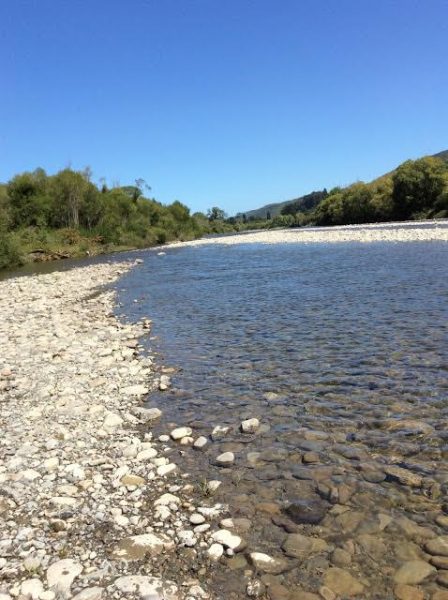

The response of the council has been to dream up a mega development project designed to protect against a hundred ( or thousand-year?) flood by taking out trees and other vegetation, houses that are nearby and straightening the river (which any fool know will make things worse) – an engineer’s and developer’s dream.
It is the third source – the aquifer, providing about 40 % of the district’s annual water supply that has been damaged – permanently, if you know much about aquifers.
As the Council’s own material explains, “the Waiwhetu artesian aquifer is a zone of water-holding sand, gravel and boulders beneath the Hutt Valley “
The water becomes naturally pressurised beneath a layer of hard clay. The aquifer, which is estimated to be 70 meteres thick and 20 m thick at the edge of the harbour, takes more than 12 months to passs through the aquifer to the council wells which makes it pure and free from disease-causing microorganisms.
The aquifer has somehow become infected with e-coli organisms.
E-coli,which forms one of the foremost reasons of water contamination in the country and the world as a whole does not exist freely in the environment but comes primarily from the intestines of animals and also humans.
Even if we accept that the aquifer has become damaged from last November’s earthquake it does not explain how the organism got to be in the artesian water below ground.
What does make sense is that piles that were sunk for one or other of the new building projects in this Council’s development mania may have pierced the aquifer seal and somehow, that combined with broken pipes, has contaminated the pure artesian water.
The latest word is that the chlorination of the water might become a permanent feature, which makes perfect sense.
WHAT SHOULD WE DO?
This is conjecture on my part based on what I know. Call it a hypothesis.
Unless some brave soul with a conscience finds a way to access the information needed and share it with the public we might not be any the wiser.
We live in an era where divulging (or leaking) information essential to the public interest is regarded as a crime worse than the most egregious acts and cover-up by the authorities.
The council is not being ‘transparent’ in its communication. It is closer, in my opinion, to ‘transparent lies’.
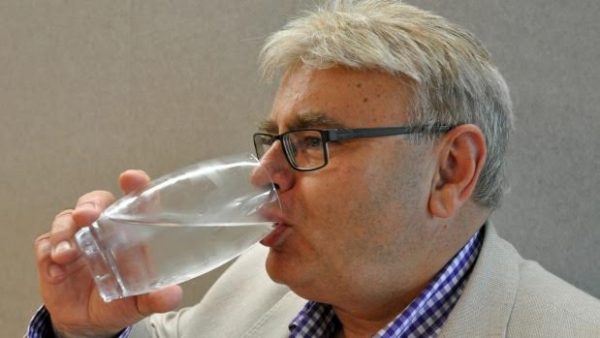
Mayor Ray Wallace
Expert wants details of E-coli in Lower Hutt’s aquifer made public
Tragically it is not a case of ‘putting things right’. The precious purity of our water has gone so it is pointless to cry over spilt milk but to recognise the situation as it is and make efforts to ensure that the development-obsessed council do not repeat the exercise again in the future.
I enourage everyone who can to write letters and ask questions and generally not give this council a moment of peace until they come clean.
Someone also needs to do some work to make the certain connections with abrupt climate change (not the nonsense from the IPCC that we have until 2100).
Robin Westenra is an environmental activist




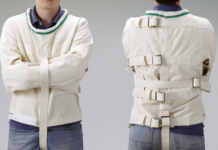
Virtually no effective precautionary policies have been laid down by the Councils including the GWRC.
Put up a parking lot and destroy paradise is a well known message but ignored by business and bureaucrats.
The public deserve to show anger at the lack of care and vandalism supported by their elected representatives.
We are now under attack by those who are plotting to destroy the health of our Nation and death of many so we now need to declare war on those who have the intent to destroy us and our environment.
We should begin with those who recklessly allowed our water quality to be poisoned then we need to round up all the local/central authorities who allowed to have our aquifers plundered & raped by widespread removal of our water for export by foreign and local greedy interests.
Make no mistake, – we are now clearly at war with greed and wanton destruction of our country.
The Local Waiwhetu Marae just spent thousands boring a new well into the local Hutt Aquifer ,only to now be ordered not to use it (a ban on all public & Private wells is in place) , the water stinks worse than a swimming pool & its very noticeable, not pleasant at all.
As this latest tapped bore into the aquifer is ‘public’ knowledge (Hutt News) then why has nobody dared connect this as the direct sorce rather than blaming indirect sources such as the Council Buliding as the V.I.C area in the Hutt has had decades of large infrastructure built up in the area & it seems unfair to lay blame without any facts.
as for the ‘Straightening’ of the river ,its a terrible idea – the council has forced the sale of half (if not many) of the houses along Marsden St (including one admittedly that is centomental to me).
This certainly is a developers dream but certainly will signal the final death of the Aquifier for sure. (my hope is that it never ends up happening & that they leave the stopbank + River as is).
When avoidable large-scale construction does irreversible damage to natural assets like the Waiwhetu aquifer, it’s just another symptom of a corporate-controlled government, obsessed with the growing numbers on spreadsheets regardless of the real world costs. As well as the dairy industry, the current government are also in thrall to a heavily corporatized construction industry, made fat on the blood of council maintenance contracts that used to be handled at cost by the Ministry of Works (prior to the neo-liberal era). Mega-dump projects, the Roads of Dubious Significance, the overzealous demolition and rebuilding after earthquakes, and the white elephant stadium building (eg Dunedin’s new stadium built on claimed land at current sea level!) are all policies designed to funnel large chunks of public money into the pockets of fly-by-night development companies and the construction industry they bring in to do the work.
BTW It would be interesting to do an OIA request on the Council to find out how much the public of the Hutt are now spending on chlorination chemicals, and which companies they’re buying them off. With that information, it would be interesting to see whether there’s any evidence of business relationships between the companies doing the large-scale development in the Hutt and the companies selling the Council the chlorine, and also whether any sitting councilors have any business connections with any of these companies.
As I recall the aquifer water starts going underground at Kaitoke, and takes about 3 years to get to the harbour. The outflow is millions of litres per minute or second (I can’t recall which) – it dilutes the seawater so much at that point that marine life cannot survive. Looking at the site of Waterloo pumping station, any contamination would have to be well upstream. What major works are there other than the Haywards flyover? Where is the E.Coli getting in exactly? How far upstream? Surely that is the first question to answer.
Comments are closed.